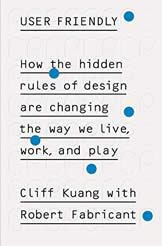Meeting the Needs of Parents Pregnant and Parenting after a Loss
Meeting the Needs of Parents Pregnant and Parenting After Perinatal Loss offers a supportive framework that integrates continuing bonds and attachment theories to support prenatal parenting at each stage of pregnancy. Giving insight into how a parent’s world view of a pregnancy may have changed following a loss, readers are provided with tools to assist parents as they explore pregnancy (conception, gestation, labor and birth) once again.
Power of Attachment – Review
Heller provides a clear discussion to help readers understand attachment theory in general and the different attachment styles, noted as secure, anxious, ambivalent, and disorganized. At the end of each chapter there are questions to help readers assess which style they may align more with. I appreciated the direction to answer the questions, twice. First, when you are imagining a relaxed situation and second when you are tense, feeling defensive, upset. The results are indeed different. I also thought it wise to let readers know that our attachment style is not fixed in one category or the other. Our attachment style is individualized, and fluid, flexible. In some relationships we may have a sense of a secure attachment while in another we might feel more avoidant or ambivert.
Feminist Therapy: Second Edition
Feminist Therapy: Second Edition offers some insight into the beginnings of the feminist movement, educating the reader about the various political uprisings that spurred it into motion. Interestingly, there is no one founder of feminist therapy. Similar to a democracy, where the government is formed by and for the people, feminist therapy struggled with defining its boundaries and was left to the interpretation of the clinician practicing it.
Quiet Power: The Secret Strengths of Introverts
In a society that praises and encourages extroverted behavior, Susan Cain’s book Quiet Power: The Secret Strength of Introverts is a lifeline for youth and adolescents who struggle to accept and find the value in their introverted tendencies. Building on previous research on introversion, Cain’s book serves as both a self-help guide for introverts and a learning tool for clinicians seeking to understand introverts and adjust their practice accordingly.
Therapy with a Coaching Edge
Lynn Grodzki’s new book, Therapy with a Coaching Edge, guides professionals who are interested in a model of therapy that incorporates a coaching approach. She begins with a description of the basic model, which is comparable to a combination of traditional psychotherapy and life coaching. She then explores a set of nine specific coaching skills, including asking motivating questions and being more reactive. Grodzki has designed the book to be flexible and suitable for people with varying interests so that professionals can either adopt the complete model or select the concepts and skills that appeal to them the most.
Anna Halprin: Dance, Process, Form
Anna Halprin: Dance, Process, Form details the life and work of dancer and artist Anna Halprin. Halprin was an early innovator in dance therapy, using the medium as a form of personal exploration through artistic and physical expression. Her work with groups of people, either for specific art pieces or in experimental workshops, was highly influential for the development of both dance therapy and avant-garde expressionism.
How People Change
How People Change offers 11 essays exploring growth and change, which are noted to be “at the heart of all successful psychotherapy”, and I will add at the heart of body psychotherapy and somatic psychology. The body and its place in our lives—our healing and overall health— is part of the process in many of these essays. A clear focus on mind-body dualism is supported as many of the authors write about the relationship between client and therapist and explore “the complexities of attachment, the brain, mind, and body as they aid change during psychotherapy.” Contributors include: Philip M. Bromberg, Louis Cozolino and Vanessa Davis, Margaret Wilkinson, Pat Ogden, Peter A. Levine, Russell Meares, Dan Hughes, Martha Stark, Stan Tatkin, Marion Solomon, and Daniel J. Siegel co-authoring with Bonnie Goldstein. Each essay presents the author’s thoughts on how to induce, instigate, facilitate change in psychotherapy, how to be with the client in the change process, and what it means to be in relationship with a client’s mind, brain, body, and soul. While there is not time nor need to detail each essay, I offer small glimpses of some of them.
Anorexia Nervosa: Focal Psychodynamic Psychotherapy
Anorexia nervosa. Two words that often summon an image of emaciation: the kind where skin hangs off bones, darkened sockets shield distant eyes refusing to see, the smell of one’s body feeding on itself, the remnant of a cannibalization process meant to perpetuate life.












